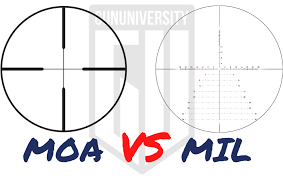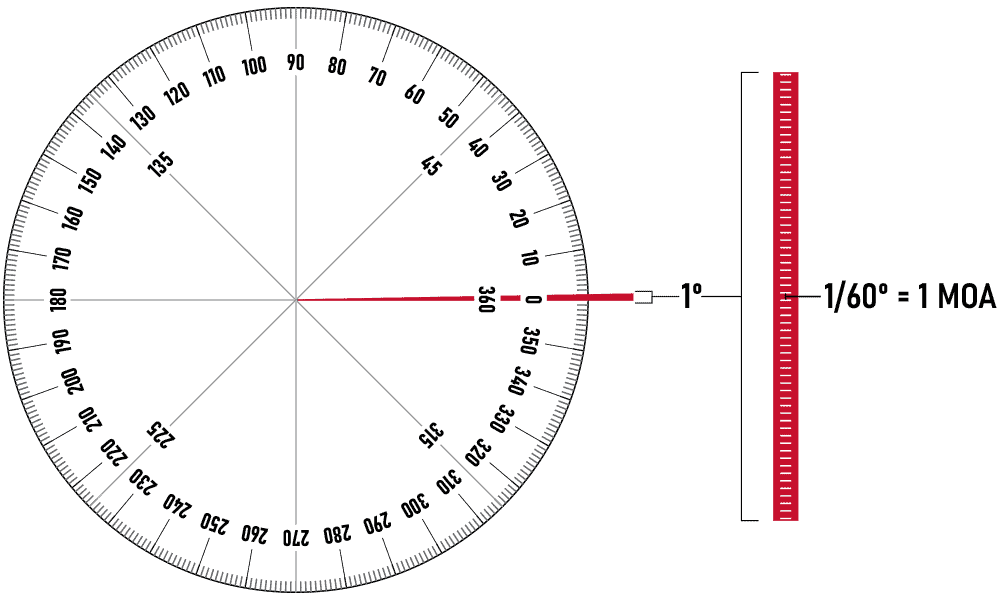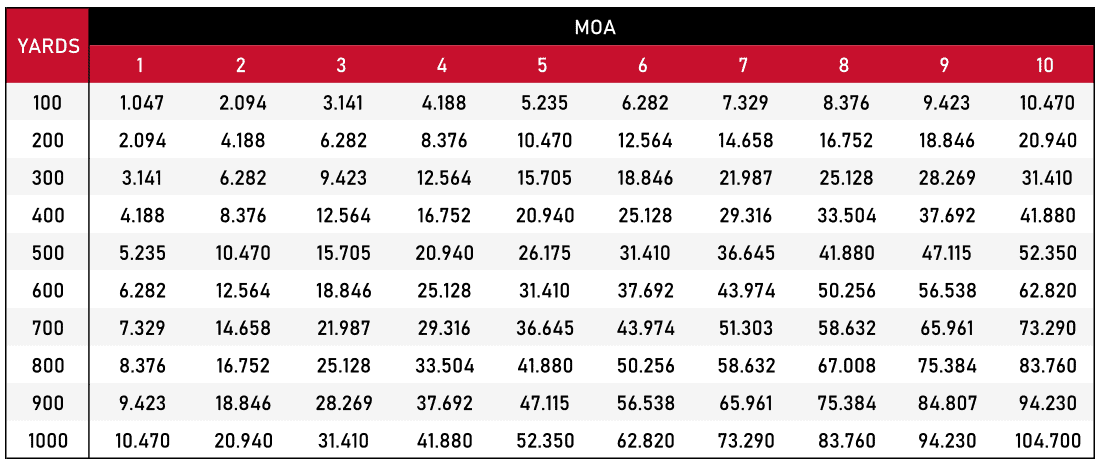
Understanding MOA and MIL: An In-depth Insight into Optics
Compartilhar
Introduction:
When it comes to optics, two commonly used units of measurement are MOA (Minute of Angle) and MIL (Milliradian). These units play a crucial role in determining accuracy, precision, and consistency while using riflescopes, red dot sights, and other optical devices. In this article, we will explore the concepts of MOA and MIL, their applications, and the differences between them.

What is MOA?
MOA, short for Minute of Angle, is an angular measurement that is widely used in the world of optics. It is based on the idea that there are 360 degrees in a circle, and each degree can be further divided into 60 minutes. Therefore, 1 MOA represents 1/60th of a degree. The significance of MOA lies in its ability to provide a consistent and easily calculable unit of measurement for shooters, particularly for long-range shooting. It allows for precise adjustment of the optical device's reticle, ensuring accurate shot placement. One MOA at 100 yards, for instance, is equivalent to approximately 1.047 inches, enabling shooters to make precise adjustments when necessary.

The term “minute” simply means 1/60th. As a measurement of time, a minute is 1/60th of an hour. As an angular measurement, a minute is 1/60th of a degree.

MOA is not dependent on distance, but distance determines the size of MOA. For example, at 800 yards, 1 MOA is still 1 MOA, but it’s 8x larger than it is at 100 yards. See the following table.

What is MIL?
MIL, short for Milliradian, is another angular measurement commonly used in optics. Unlike MOA, which is based on the imperial system, MIL is derived from the metric system. One MIL represents 1/1000th of a radian or 0.0573 degrees. Similar to MOA, MIL facilitates precise adjustments by providing a consistent unit of measure. MILs are often favored by military and law enforcement professionals due to their compatibility with the metric system. MIL dots, or reticles with MIL markings, are commonly found in tactical scopes and are used for estimating range, compensating for windage and elevation, and making accurate holdovers.

MILs, or milliradians, are a unit of measurement dividing radians in a circle. A radian is equal to 57.3 degrees, with 6.2832 (π x 2) radians in a circle. There are 1000 milliradians in 1 radian, and therefore 6,283 milliradians (or mils) in a circle. Thus, 1 MIL at 100 yards is equal to 3.6” inches and 1 MIL at 100 meters is equal to 10 centimeters. At 100 meters, 1⁄10 of a mil equals .9999 centimeter. Practically speaking, 1⁄10 of a mil equals 1 centimeter at 100 meters.

A mil is so large that it's usually broken into tenths in order to make precise adjustments on your scope turret.
So 1 mil equals 1 yard at 1,000 yards, and 1 meter at 1,000 meters.
It doesn't matter if you use metric or U.S. Scale, and that's its beauty.
Milliradian scopes are often adjustable by 1/10th (0.1) mil increments. At 100 yards, a 0.1 mil click is 0.36 inch, and a full mil is 3.6 inches (Practically speaking, 1⁄10 of a mil equals 1 centimeter at 100 meters).
MILs, like MOA, is an angular measure, and the length it represents, increases proportionally with distance. For example, 1 mil at 100 yards equals 3.6 inches, and 7.2 inches at 200 yards.

Key Differences between MOA and MIL:
1. Measurement Systems: MOA is based on the imperial system with 1 MOA being approximately 1.047 inches at 100 yards, while MIL is based on the metric system with 1 MIL being approximately 3.6 inches at 100 yards.
2. Precision and Gradation: MOA offers finer adjustments compared to MIL. With 1 MOA being smaller than 1 MIL, shooters can make more precise adjustments when using a MOA-based optic.
3. Conversion: While MOA and MIL are different units of measurement, they can be converted into each other. 1 MOA is approximately equal to 0.29 MIL, and 1 MIL is approximately equal to 3.44 MOA.
MOA Pros:
- Minute of angle scopes are generally less expensive (on average) than Milliradian scopes
- If you already think in inches, it’s easier to see and adjust for. For example, if you can see that you need to move your bullet impact up 14 inches at 100 yards, you know that’s a 14 MOA measurement and a 14 MOA adjustment
- If you’re a hunter or casual shooter, you’re more likely to have all of your scopes adjust in the same units of measurement
MOA Cons
- Although it can be done, it is slightly more difficult to measure and range estimate with MOA
- Most MOA scopes do NOT have reticles with measurement marks
- Most MOA scopes are second focal plane (SFP) scopes where the reticle stays the same size throughout the magnification adjustment range
- Can be more difficult to communicate (e.g. 17.75 MOA is more numbers/syllables than 5.1 Mils)
Mil Pros:
- Most Mil scopes are premium scopes
- Mil scopes make range estimation and conversions easy
- Most long range shooters today use Mils
- Most Mil scopes have adjustment/measurement marks on the reticle
- Once the system is learned, conversions are fast and easy
- Can be easier to communicate (e.g. 5.1 Mils is fewer numbers/syllables than 17.75 MOA)
Mil Cons:
- Mil scopes, on average, are more expensive
- Mil scopes are generally larger and heavier
Applications of MOA and MIL:
Both MOA and MIL are used in various shooting disciplines and scenarios. Long-range precision shooting, tactical shooting, and hunting are common areas where these measurements are utilized. Additionally, knowledge of MOA and MIL is beneficial for competitive shooters, snipers, and enthusiasts seeking to improve their shooting accuracy.
Conclusion:
MOA and MIL are vital units of measurement in the field of optics. Understanding their differences, applications, and conversion factors is crucial for shooters looking to enhance their accuracy and precision. Whether you prefer the imperial-based system of MOA or the metric-based system of MIL, utilizing these measurements appropriately will undoubtedly contribute to better shooting performance.
